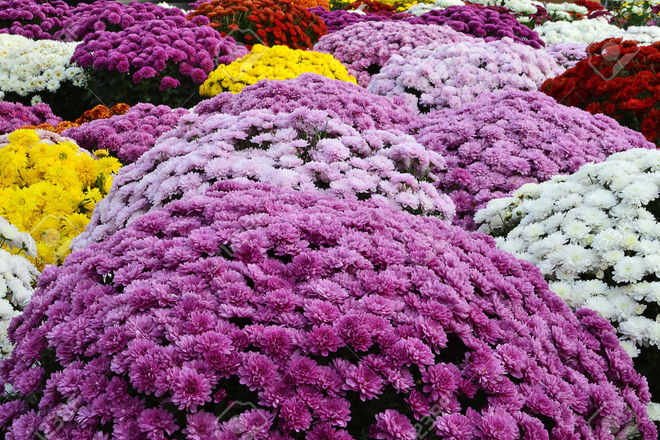
Amarjeet Singh Batth
Most modern homes in India have adopted architectural designs inspired from West where climatic conditions are completely different. The designs constitute large-sized windows (for view and sunlight) along with small windows for air circulation. The point that is forgotten here is that sunlight is not in paucity here but in abundance — almost nine months in a year. All that is needed is to ensure that there is ample of inflow of fresh air and cross ventilation in every room. Dust getting inside can be minimised by maintaining greenery outside. Here are some more plants that purify air indoors in the natural way.
- Flowering plants like chrysanthemum, (Chrysanthemum morifolium) gerbera and daisies eliminate formaldehyde. These plants require extra care in comparison to other permanent plants.
- Flowering plants like chrysanthemum, (Chrysanthemum morifolium) gerbera and daisies eliminate formaldehyde. These plants require extra care in comparison to other permanent plants.
- Money plant (Epipremnum aureum) is commonly seen an ever green wine in homes and offices. Its decorative foliage that require minimum maintenance make it more popular. It effectively removes formaldehyde, xylene and benzene released from various emissions.
- Asparagus fern ( Asparagus densiflorus). It is ever green plant very showy green foliage perform good in a place with low light and it has a good capability to absorb benzene, toluene, octane and trichloroethylene.
- Banana (Musa Oriana) can also be grown indoors in pots and containers. It requires a warm, humid and bright area. As for plant care, keep the soil moist and if possible spray the leaves periodically. It eliminates formaldehyde.
- Ficus benjamina with gracefully drooping glossy branchlets commonly known as the ‘weeping fig ‘ grows very tall in natural conditions outdoors. It can be grown in pots indoors where it remains short in height and absorbs toxins like formaldehyde, xylene and touene. This is a virtually maintenance- free plant which only requires routine care.
- Janet Crai (Dracaena deremensis) is one of the best houseplants. These grow best in bright indirect sunlight but also do well in less light with slow growth. They contribute in removing trichloroethylene.
Why is home air polluted?
Being humans, we breathe out carbon dioxide and themore we stay indoors more CO2 we generate which has to be replaced with oxygen from fresh air. High level s of carbon dioxide indoors may deteriorate sleep quality, cause headaches and even more serious health problems. Smoking is also an air pollutant.
Kitchen is another source of air pollution inside the house. Carbon monoxide and nitrogen dioxide are released through the emissions caused from cooking. Use a chimney or exhaust fan to pump out these gases. These can cause headaches, eye, nose and throat irritation and respiratory infection
Dampness caused in any form through moisture from ground plinth, pipe leakages or water tank spill is a serious concern. This dampness causes fungal growth in the house which leads to polluted air primarily through the spores produced. These pollens are a big hazard for asthmatic persons. Use quality pipes as poor quality pipes are a rich source of lead. Proper synthetic damp-proof course (DPC) must be done above ground level which act as a barrier through which water cannot pass. Breathing and perspiration add moisture to an indoor space. Humidity in a home is recommended between thirty and fifty per cent.
Paints used in the homes also affect the quality of air through release of harmful volatile emissions. Volatile organic compounds (VOC’s) like formaldehyde, benzene, trichoroehtylene are found in paints, paint removers, varnishes and waxes and poses treat to Kidney, liver and nervous system. Therefore, go for water-based colors rather than oil-based emulsions. Formaldehyde used in the production of resins is used as adhesive in particle boards, plywood and coatings is highly toxic. Use a quality product which uses resins which are within the safe limits.
Similarly, electricity wires used should be of FRLS - Flame Retardant Low Smoke and gives low burning emission in case of sparking or fire. On the contrary, PVC wires gives tick smoke and toxic fumes of hydrochloric acid gas.
The air inside may also be polluted by lead (in house dust), fire-retardants, radon, volatile chemicals from fragrances specially used in conventional cleaners. New mattress, furniture or a carpet, upholstered furniture, where dust accumulates causes air hazard.
House dust mites cause asthma and allergic symptoms. Pets also contribute through pet dander. Be careful about them.



























